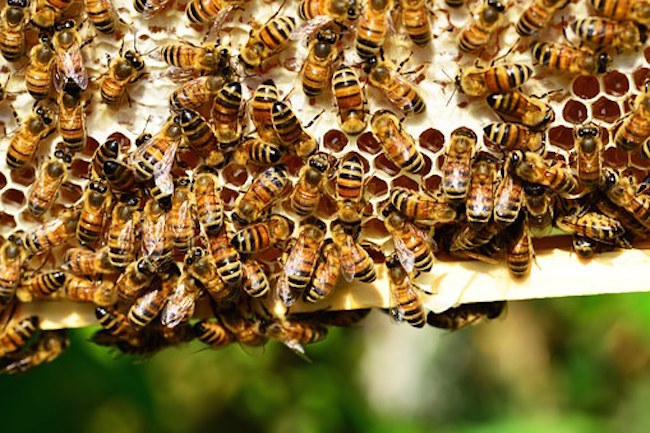Pollinators, The 4 Biggest Threats They Face, And Why You Should Care By Jayne Rising for Natural Blaze
Besides drought, disease. and supply chain disruptions, another problem that could cause food shortages is a lack of pollinators. 87% of plants require pollination to reproduce. 1/3 of food crops require pollination. In the US, beekeepers have lost 30-42% of their colonies every year since 2006.
While it’s true that many plants, such as squash, can be hand pollinated, have you ever done an entire agricultural field that way? And what about crops with tiny flowers, like cucumbers? One who can reliably hand-pollinate a cucumber is a better gardener than I! Insects do this job SO much better. In this article, we will look at pollinators and the problems they’re currently facing.
Let’s talk about the birds and the bees!
Seriously, both pollinate plants. Bees are the most well-known pollinators, but they’re far from the only ones. Birds, wasps, butterflies, and beetles also pollinate various plants. Moreover, honey bees aren’t the only species of interest. There are 20,000 species of bees worldwide and 500 in my home state of Wisconsin. The most common pollinators here are honey bees, bumblebees, Mason bees, leafcutters, sweat bees, miners, and small carpenters.
I see bumbles and Mason bees in my yard primarily. The bees are collecting pollen to feed their hive. They’re grocery shopping, basically, and they visit up to 1000 flowers per trip. Butterflies, moths, and other insects are doing the same thing: feeding their young. As they go from flower to flower, the pollinators spread pollen, allowing the plants to reproduce. Many fruits contain seeds, of course. So, everyone benefits from one of nature’s delightful balances.
What are the nesting habits of bees?
Some bees are more social than others. Honey bees, for example, prefer hives, while bumblebees are a bit more solitary. Exact nesting habits depend upon the species. However, bees generally prefer to reuse spaces such as chipmunk or rabbit burrows, preexisting holes in wood or hollow stems, compost piles, and in-ground. It’s not uncommon to find squash bees sleeping in the closed squash flowers during the day.
Artificial bee houses are becoming more common, and you can easily make them. Check out this site for principles of construction and plans.
Native vs. nonnative plants and why it matters.
The scientific definition of a native plant is as follows. The plant in question:
- Occurs naturally
- In their ecoregion and habitat where
- Throughout evolutionary time
- They have adapted to physical conditions and co-evolved with the other species in the system.
We can’t say a plant is native without saying where it’s native to. Adaptation to the local ecosystem matters a great deal. Nonnative plants, therefore, are not adapted to the ecosystem in question. That matters because pollinators are a part of the ecosystem and consequently adapted to the plants within it. Moreover, not all bees will frequent all plants within the ecosystem. Squash bees, for example, frequent only the flowers of squashes and related plants.




